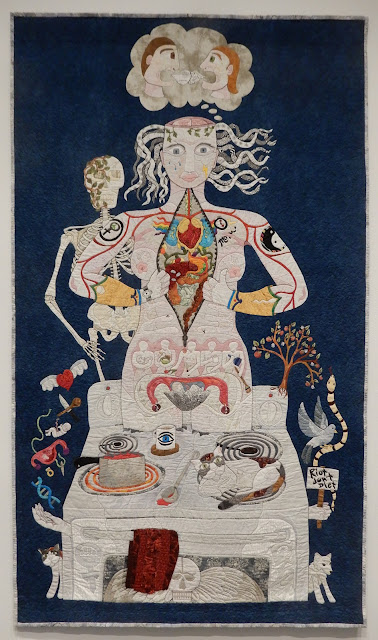Wednesday, August 26, 2020
Form, Not Function 4 -- pictorial
This year's FNF had only a few pictorial quilts, two of which won awards. One of those awards was the one given by my small quilt support group, River City Fiber Artists, which meant that I got to visit the museum early and choose.
Longtime readers will recall that I generally dislike pictorial quilts as a genre, especially portraits. I have long felt that fabric is not a good medium to depict photographically realistic images, but this year I had to admit that the quilt winning the RCFA award is perhaps the best portrait quilt I've ever seen.
Linda Anderson, Velvet Flowers, 31 x 51" (detail below)
For me, the challenge of portraiture in fabric is how to achieve the graded tones of facial features without the abrupt changes in switching from one fabric to another, the Photoshop-aided posterization process used by so many quilters to render photos into fabric. I'm sorry I didn't do a better job of figuring out the process, but Anderson either painted or printed the faces, then quilted with a whole lot of threadwork, changing colors to enhance the realistic facial contours and skin tones. Metallic thread made the image sparkle.
By contrast, look at this portrait:
Margaret Abramshe, Nan, 33 x 29" (detail below)
Here too the image is painted or printed, then quilted. But here the quilting is all the same color, intended to highlight the contours rather than the gradations in skin tome, and is much sparser, giving a stylized look to the portrait. The quilting line becomes an art element in itself.
Quite a different approach is seen in one of the honorable mention winners:
Kathy Nida, I can't Be Your Superwoman, 88 x 52" (details below)
Nida's work is instantaneously recognizable from across the room in any quilt show, with intricately rendered details in a sometimes-cartoony style. A very different approach to figurative art in quilting.
Subscribe to:
Post Comments (Atom)








No comments:
Post a Comment